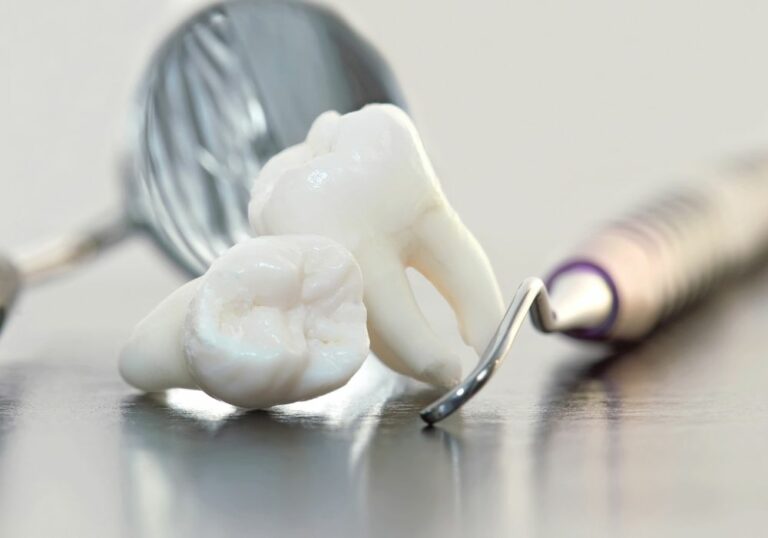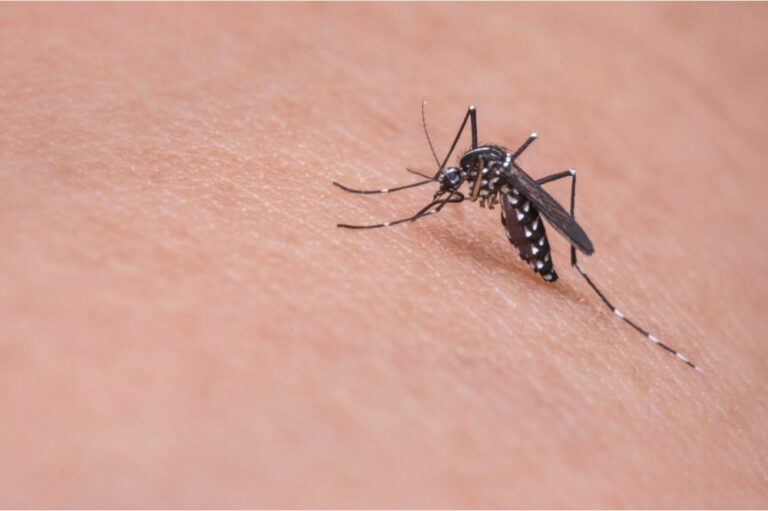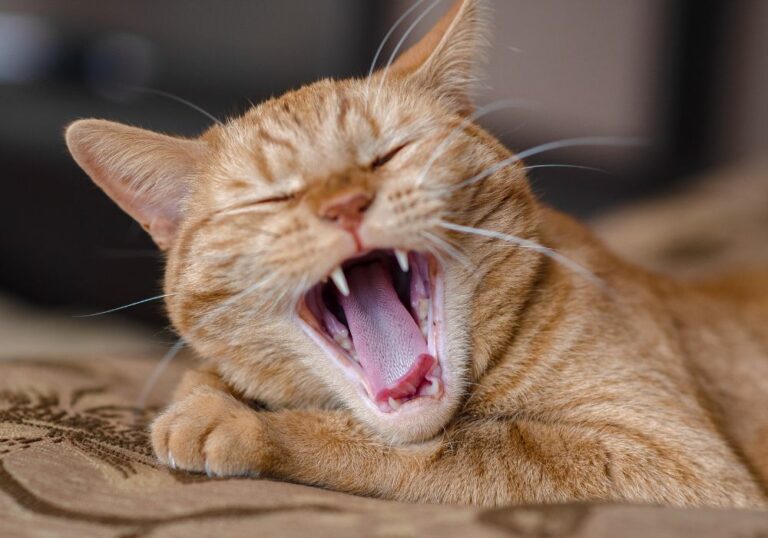Teeth represent an invaluable source of information in the study of extinct creatures. Paleontologists analyze fossilized teeth to reveal hidden details about the lives and biology of animals that lived millions of years ago. The size, shape, microscopic structure, and wear patterns of ancient teeth can provide remarkable insight into long-vanished ecosystems and evolutionary lineages.
Decoding Diets through Dental Adaptations
The most fundamental facts teeth reveal about prehistoric animals relate to their diets. The diverse forms and functions of teeth allowed ancient organisms to effectively acquire and process different types of food. By studying dental anatomy, paleontologists can discern whether extinct species were carnivores, herbivores, or omnivores.
Carnivore dentition
Extinct predators with all-meat diets possess sharp, blade-like teeth. These function as deadly weapons to puncture flesh and crush bone. The teeth have serrated edges that act like serrated knives to slice through muscle, tendons, and cartilage.
For example, iconic predatory dinosaurs like Tyrannosaurus rex and Velociraptor had mouths full of 6-inch long, dagger-shaped teeth. Their teeth were laterally compressed and banana-shaped, with reinforcing ridges on the rear surface. This enabled T. rex to bite with bone-crushing force. Meat-eating mammals like saber-toothed cats and entelodonts also had elongated, serrated canines. The teeth were prone to breaking during violent killing and feeding behaviors.
Other features like recurved tooth tips, enlarged serrations, and notch-like denticle shape all maximize the cutting and piercing functions necessary for a diet centered on fresh meat and bone. So simply looking at the basic morphology of fossil teeth provides immediate clues as to the carnivorous nature of extinct species.
Herbivore dentition
In contrast, plant-eating animals evolved very different dental architectures. The teeth of herbivores are broad, flattened, and have elaborate ridged surfaces ideally suited for grinding fibrous plant material.
For example, horses have high-crowned teeth with complex infoldings of enamel that created ridges and cusps for pulverizing tough grasses. The teeth grow continuously throughout life as the grinding surface wears down from chewing abrasive vegetation. Other herbivores like hadrosaurid duck-billed dinosaurs had hundreds of small, ridged teeth arranged into batteries. This produced a larger combined grinding surface to break down leaves and stems.
Early elephants had low-crowned teeth with straight ridges aligned perpendicularly across the chewing surface. This pattern crushed woody branches and shrubs. Later mammoths evolved taller, parallel ridges that effectively processed tough Arctic tundra grasses. The distinctive dental features of extinct herbivores reflect adaptations for breaking down all types of plants including leaves, roots, seeds, nuts, and stems.
Omnivore dentition
Animals that ate both meat and plant materials have dental characteristics intermediate between carnivore and herbivore teeth. Omnivore teeth have some serrated surfaces and sharp cusps that can tear flesh combined with broader grinding areas that can process fruits, nuts, and other plant foods.
For example, most bears have teeth with sharp shearing crests on the carnassials but also flat molars in the rear of the mouth for grinding vegetation. The teeth of extinct bears like Agriotherium had similar carnivore-herbivore dental features. Early pigs had bunodont molars suitable for an omnivorous diet of meat, roots, fruits, and nuts.
So omnivore teeth display more variability and multi-functionality compared to the specialized dentition of strict carnivores and herbivores. Their mix of dental traits enabled dietary flexibility and allowed them to obtain nutrition from a wide range of food sources.
Inferring Feeding Behaviors from Tooth Wear
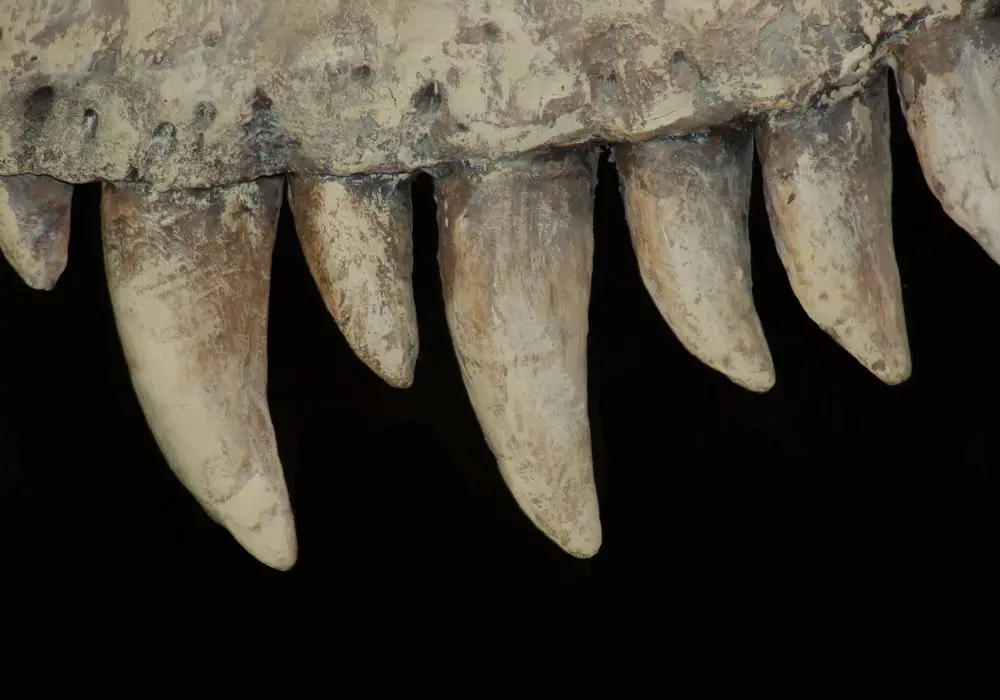
In addition to diet, the wear and damage patterns displayed on fossil teeth provide clues about how extinct animals used their teeth during feeding. Different types of tooth wear suggest behaviors like cracking hard nuts, gnawing bark, stripping flesh from carcasses, and biting during combat. These habits left distinctive traces that paleontologists can interpret to reconstruct ancient lifestyles.
Chipping and pitting
Heavily pitted and chipped teeth likely indicate regularly eating hard or crunchy foods. The rough textures and hard shells of items like nuts, seeds, bones, snails, and crustaceans could fracture and pit tooth enamel during chewing. Species that commonly exhibit extensive pitting include certain rodents, bats, and bone-crunching hyenas and dogs that regularly gnawed on carcasses. The microscopic damage on their teeth records a lifetime of crunching through hard foods and skeletal materials.
Other examples include extinct primates like the lemur Hadropithecus that lived in Madagascar 7000 years ago. These primates had thick dental enamel riddled with pits and cracks, suggesting they fed on hard nuts and seeds encased in shells. Heavily worn teeth are also seen in the extinct giant ground sloth Megalonyx, indicating this species probably fed on nuts and crunchy foods despite its mainly herbivorous diet.
Scratching and gouging
Long scratches and gouges worn into teeth can indicate behaviors like stripping bark from trees, digging in dirt for food like roots or burrowing rodents, or twisting and pulling flesh from carcasses. These activities grind down teeth surfaces through sustained abrasive contact and generate remarkable tooth wear over an animal’s lifetime.
For example, the teeth of modern wild boars and their extinct cousins often show pronounced scratching from using their tusks to root around in soil while foraging. Fossil bears like Agriotherium display extensive tooth gouging likely caused by stripping bark from trees to access sap and insects beneath. Baboons and mandrills have heavily scratched teeth from digging for tubers and abrasive grooming activities.
Tooth breakage
Broken tooth tips, whole broken teeth, and associated jaw fractures occur most frequently during combat or violent feeding behaviors. Cracks and fractures can result from aggressive interaction with members of the same species over mates, territory, or resources. Broken teeth also arise when subduing and dismembering prey.
For example, large predatory cats like saber-toothed cats, lions, and leopards often have broken canines and fractured jaws from combative encounters and occasionally damaging their teeth when killing prey. Bears also exhibit high rates of premortem tooth breakage from their violent lifestyles. Equally, herbivores like deer and bovids can break teeth or jaws when competing for mates using their antlers and horns. So excessive ante-mortem tooth breakage serves as a clear indicator of intense physical interactions and violent feeding behaviors.
Insights into Biology and Life History
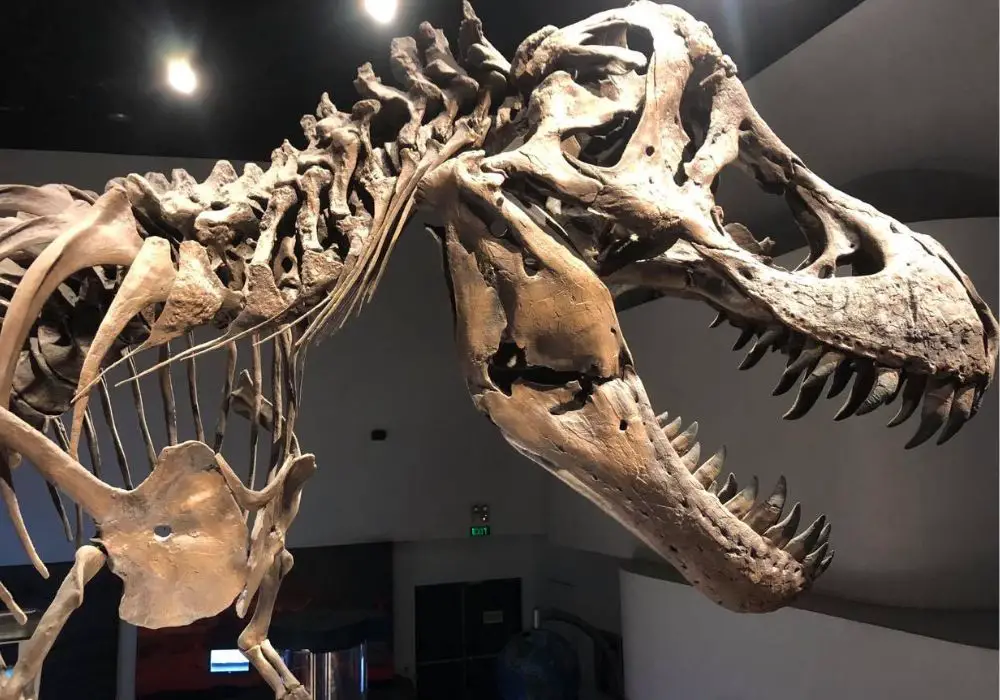
Beyond diet and behavior, teeth provide additional biological information about extinct species including age, growth rate, sexual differences, habitat preferences, and evolutionary relationships.
Age at death
As animals age, their teeth become progressively worn down from cumulative use over years of feeding and chewing. Young animals have unworn, sharp-tipped teeth while elderly individuals exhibit extremely worn, stubby teeth. The degree of tooth wear can provide insight into the age of fossil animals when they died.
Inhistoric humans, molar wear patterns have been used to estimate age-at-death. Heavy wear indicates middle or old age while light wear suggests younger ages. In extinct hominins like Australopithecus, heavily worn teeth signify particularly old individuals in the population. Mammal species today and in the fossil record exhibit similar dental wear patterns that allow paleontologists to gauge approximate age.
Growth rate
The fine internal structure of teeth can reveal growth rate data. Teeth contain microscopic lines called von Ebner lines in the dentine layer. These represent daily growth increments similar to the rings of a tree. The spacing between these daily growth lines indicates how quickly the tooth mineralized. Tightly spaced lines correspond to slow growth, while wider spacing means more rapid growth. This provides insight into an animal’s overall metabolic rate and life history strategy.
For example, studies of von Ebner lines show the teeth of large extinct bears grew more slowly compared to smaller carnivores like extinct wolves. This reflects their lower metabolic rates and longer maturation times. Analysis of growth lines continues to provide quantitative data on dental development rates in both modern and extinct species.
Gender differences
In some animal species today, males exhibit larger teeth than females, particularly the canine teeth and tusks used for display and combat. This strong sexual dimorphism is also apparent in extinct species.
For example, male saber-toothed cats had enormously elongated upper canine teeth up to 28 centimeters long compared to female canines around 20 centimeters. Male woolly mammoths also had longer and thicker tusks with greater curvature than females. These tusk and tooth size differences relate to the role of males in combat and display. Analyzing canine and tusk size dimorphism allows paleontologists to identify the sexes of ancient animals from many mammalian groups.
Environmental isotopes
The isotopic chemistry locked within tooth enamel reflects the environmental conditions an animal experienced during its early life. Carbon and oxygen isotope ratios indicate whether an animal lived in forested or open grassland habitats. Strontium isotopes track the local bedrock geology and water sources. These chemical fingerprints shed light on where animals traveled across landscapes during seasonal migrations.
For example, woolly mammoth tooth enamel has very negative oxygen isotope values that prove they lived in cold Arctic steppe-tundra environments dominated by grasses. In contrast, mammoths that inhabited temperate forests and wetlands had isotope values indicating abundant drinking water and closed habitats. Isotope analysis continues to reveal exciting details about the habitats and migratory behaviors of ancient organisms.
Evolutionary relationships
Teeth contain anatomical clues that help decipher how extinct animals are evolutionarily related to each other and to living creatures. Features like the cusp patterns on molars, the number of incisors, and the structure of dental enamel exhibit changes over evolutionary timescales. Paleontologists analyze these dental characteristics and similarities to study phylogenetic relationships.
For example, primordial mammals had three incisors, one canine, and four or five cheek teeth in each quadrant. More advanced therapsids like gorgonopsians and cynodonts show the beginnings of the modern mammal dentition pattern with just three incisors and three premolars. The incremental progression of dental traits over time provides critical evidence of how major groups diverged and are connected on the mammalian family tree.
Spotlight on the Teeth of Famous Extinct Creatures
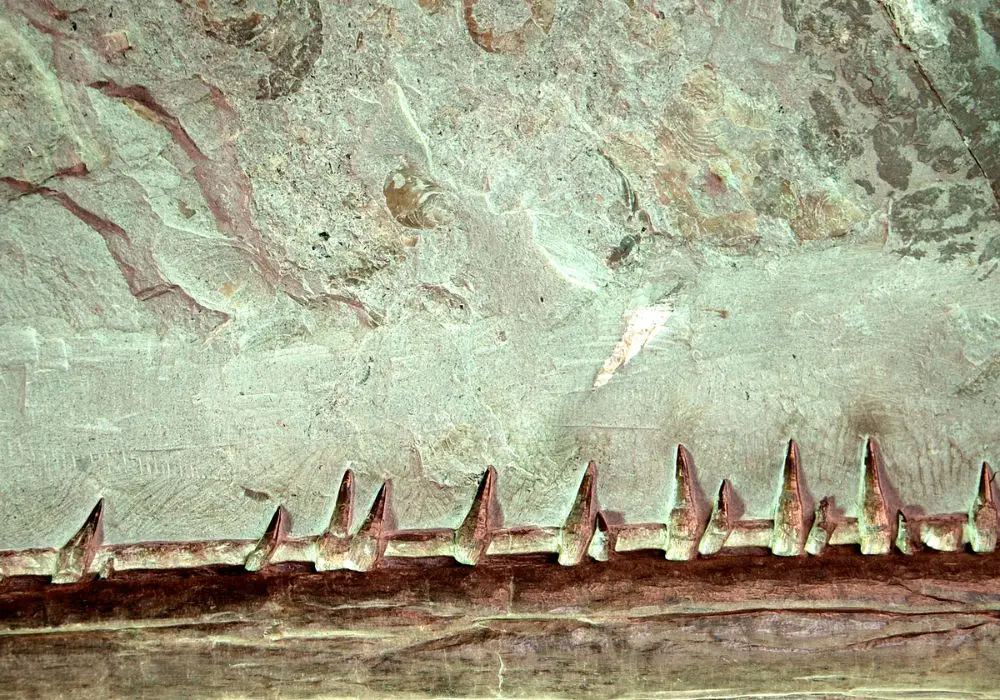
The teeth of many iconic prehistoric animals have revealed astonishing details about their biology and behavior. Here are highlights from a few famous examples.
Saber-toothed cats
These ferocious carnivores had elongated blade-like canine teeth up to 28 centimeters long. Their fragile teeth were prone to breaking from combat and hunting injuries. Microscopic wear shows they used their canines like daggers to pierce prey while their incisors stripped flesh from carcasses. Differences in canine size demonstrate clear male-female dimorphism. Stable isotope ratios suggest saber-tooths were highly mobile hunters that migrated long distances in pursuit of prey.
Woolly mammoths
Woolly mammoths evolved large ridged molars coated in thick enamel to grind abrasive Arctic grasses and sedges. Carbon isotopes confirm their primarily grazing diet. CT scans of growth lines reveal their molars grew exceptionally fast, fueling their immense body size. Curvature and size of tusks indicates substantial male-female differences. Enamel isotope values reflect their migration patterns across the vast Ice Age steppe environment.
Triceratops
This iconic horned dinosaur had over 800 teeth packed into batteries that functioned as self-sharpening cutting and grinding surfaces. Microwear patterns indicate it fed on both coarse and soft vegetation. Broken tooth tips and jaw fractures hint at combat behavior, probably jousting with horns and beaks. Its teeth were constantly replaced but still exhibit pitting and scratches from chewing on grit-filled plant matter.
Paranthropus robustus
A southern African hominin, “robust australopithecine” possessed enormous grinding molars and small incisors. Tooth wear indicates it ate very hard or abrasive foods, probably nuts, roots, seeds, and tubers. Heavy pitting and microwear suggests it did not preferentially feed in grasslands. Thick tooth enamel protected its teeth from its highly abrasive diet. Its massive jaws and teeth reveal an early side branch distinct from our direct human ancestors.
Thylacosmilus
This bizarre marsupial sabertooth from South America had huge saber-like canines. But unlike other sabertooths, its jaw joint was very weak. Tooth wear indicates it had a unique puncture-and-pull feeding style where prey only contacted the tooth tips. Its fragile teeth broke frequently but were replaced quickly. Thylacosmilus represents a totally unique and highly specialized sabertooth predator unlike any extinct or living carnivore.
The diverse teeth of ancient creatures continue to reveal astonishing secrets about ecology, biology, behavior, and evolution stretching back millions of years. Advances in analytical techniques like CT scanning, chemical analysis, and microscopic imaging promise to uncover even more insights hidden deep within fossils of these remarkable teeth.
Frequently Asked Questions
How do paleontologists find fossil teeth?
Fossil teeth are discovered through meticulous excavation and screening of ancient sediments. Teeth are the most durable part of the skeleton, so are often the only remains left. Paleontologists search in fossil hotspots like ancient river channels, caves, volcanic ash deposits, and ancient swamps where teeth accumulate. They screen dig site sediments using fine meshes to concentrate tiny specimens. Sites may yield hundreds of isolated fossil teeth.
Can extinct animals like mammoths be cloned from ancient teeth?
No, teeth do not contain intact DNA sequences needed to clone extinct creatures. While teeth do mineralize around cells, the DNA degrades over time into small fragments useless for cloning purposes. However, useful genetic data can still be obtained from ancient proteins and RNA that survive within tooth dentine and cementum. But no cellular nuclei with whole genomes exist in fossil teeth.
Did tooth trouble drive any extinct animals into oblivion?
Yes, dental issues likely contributed to the extinction process in some species. Steller’s sea cows – large marine mammals hunted to extinction in the 1700s – appeared prone to poor tooth replacement and extreme wear that could have led to starvation. The giant shark megalodon had huge but fragile teeth that took months to replace, possibly accelerating its extinction 2 million years ago. Inbreeding depression in cheetahs today causes severe dental problems that would hinder survival without human care.
How old are the oldest fossil hominin teeth?
The oldest definitively identified hominin teeth come from Sahelanthropus tchadensis, found in Chad, which lived around 7 million years ago. These teeth already show some dental trends toward the modern human condition, such as smaller canines. The next oldest hominin teeth are from Orrorin tugenensis in Kenya, around 6 million years old. Hundreds of early hominin teeth 5-7 million years old have now been recovered, shedding light on our deepest evolutionary origins.
What inferences can we make about diet from hominin teeth?
Studies of wear patterns, tooth chemistry, and microwear in early hominin teeth provide remarkable insight into their diets. Australopithecus species like A. afarensis show pitted, scratched enamel from diverse abrasive diets including nuts, tubers, and seeds. In contrast, early Homo teeth from 2 to 1.5 million years ago have less dental wear, suggesting they ate more meat and used tools to process food. Analyzing our fossil teeth continues to reveal the diets of our ancient ancestors.

